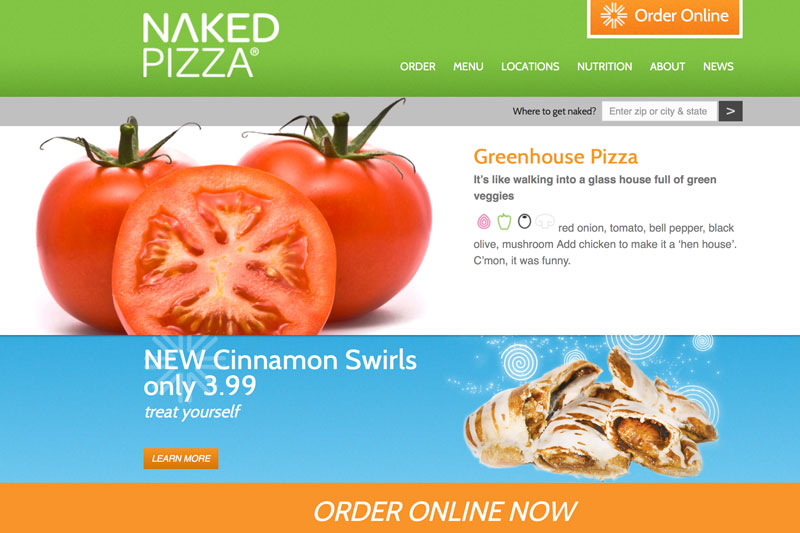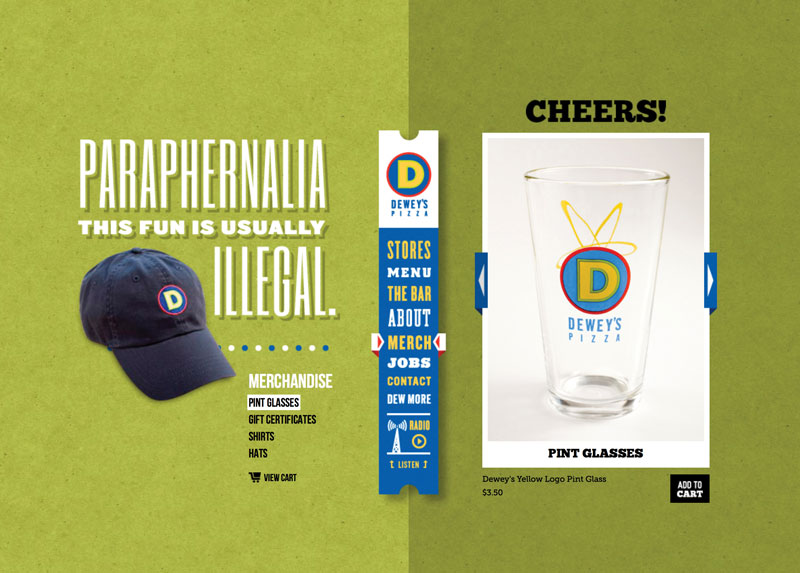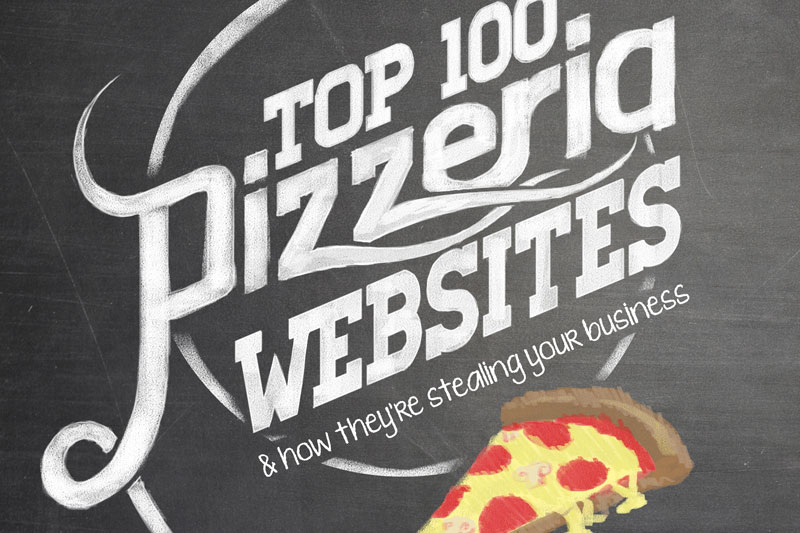Papa John’s (papajohns.com) holds the No. 1 spot, with Domino’s (dominos.com) and Pizza Hut (pizzahut.com) next in line—that’s not exactly a shocker. Chuck E. Cheese’s (chuckecheese.com) ranks at No. 4, with California Pizza Kitchen (cpk.com) taking fifth place. What do these companies have in common? Duh. They’re huge chains, obviously. But that’s not all. In addition to being household names, these pizza companies—and most of the rest of PMQ’s Top 100 Pizzeria Websites—offer online ordering. And if you own an independent pizzeria or even a relatively small multiunit operation, the pizza giants aim to use this digital technology to take away your market share.
If you learn nothing else from this list, that’s the message PMQ Pizza Magazine publisher Steve Green hopes you’ll take to heart: Quit dragging your feet on online ordering. “In this era of rapid technological advances and new gadgets that make life easier for everyone, online ordering as a featured component on a dynamic website will make life—and business—easier and more successful for pizza operators, especially independents in danger of losing the competitive battle to the big chains,” Green says.
Online ordering’s role in powering website traffic merits its own story, so check it out on page 38. Meanwhile, there’s more to be learned about the power of Internet marketing just from perusing our list and visiting these wonders of the Web yourself.
Form and Functionality
It’s hard to believe, but some pizzerias still don’t have standalone websites. These holdouts are making a mistake, notes Linda Duke, CEO of Duke Marketing and author of PMQ’s Marketing Maven column. “Restaurant operators have to make changes to stay relevant for today’s and tomorrow’s guests,” Duke says. “With the ease of creating a website today, there’s more upside than downside to it for older pizza brands. At the very least, there are numerous premade templates and do-it-yourself platforms that cost nothing and will help an old-time pizzeria compete with other food brands in their vicinity. And their brand will show up online in maps, area guides and Yelp, giving them a greater competitive advantage than not having a website at all.”
For small businesses working with a skilled professional developer, a strong website lets you create a high-end worldwide marketing campaign worthy of Mad Men without draining your bank account. The majority of the sites on our list splendidly meld form and functionality, pushing a strong “sell” message without skimping on aesthetic appeal. At No. 36, for example, the single-unit Flour + Water (flourandwater.com), located in San Francisco, is a visual marvel, making excellent use of gorgeous photography in a rotating gallery that features both luscious food shots and scenes of happy patrons in an elegant yet relaxed setting.
In Brooklyn, New York, Franny’s (frannysbrooklyn.com), ranked No. 78, is another example of what a single-unit store can do with a few tasteful pictures and some well-written text. The splash page grabs the eye with an urban-chic, black-and-white scene showcasing the shop’s exterior as seen from Flatbush Avenue. You’ll also find bios for key staffers and mini-profiles of favorite suppliers and collaborators under a section titled “People We Love,” plus a shopping cart that offers logoed hoodies, tote bags, T-shirts and hats.
At No. 77, the website for Dewey’s Pizza (deweyspizza.com), with 20-plus shops in Ohio and Missouri, may be the coolest site on the list, exuding hipster appeal without trying too hard. With its ticket-shaped centerpiece that doubles as a navigation menu, the slider-style site surprises you at every turn with killer graphics and catchy slogans (“The More You Dew, the More You Get” and “The Hendrix Guitar Solo of Pizza—Except We Never Burn It”). There’s even a “radio” button that streams rock tunes from bands like Guided by Voices, Phish and The Black Crowes.
 |
|
At No. 35, Naked Pizza (nakedpizza.biz) uses a clean, simple layout highlighting vegetables and fruits, such as tomatoes and artichokes, to convey a healthy, |
From Funky to Conservative
At No. 52, New York-based Two Boots (twoboots.com), which also has locations in Jersey City, Baltimore, Nashville and Los Angeles, gives off a funky, offbeat vibe with its celebrity caricatures and a grid of hyperlinked images touting fun new pizza specials, partnerships with community groups, store locations and more. The pop culture-savvy menu page doesn’t just make you hungry—it’s almost guaranteed to make you smile, thanks to some clever animation and awesome pizza names inspired by film and TV characters. Point your cursor to the Cleopatra Jones image and watch Tamara Dobson’s afro grow and grow; point to The Newman and the classic Seinfeld character laughs demonically as hellish flames leap behind him. Click on any image, and you’ll get a photo of the pizza, a list of the key toppings, plus a funny write-up about the pie’s famous namesake.
Granted, you can build an effective website without all those bells and whistles, and a more conservative approach may work better for your customer base. Simplicity has a power of its own, especially if you organize your content effectively. Ranked No. 41 on our list, Pizzaiolo (pizzaiolooakland.com), a single-unit store in Oakland, California, presents virtually all of its content in a format that requires very little scrolling and still manages to hit the key points—address and phone number, business hours, making reservations, even a plug for its breakfast menu. At No. 65, San Francisco’s A16 (a16sf.com) goes for a similar effect, focusing on mouthwatering food shots and a simple navigation menu with just five content pages that answer every question a guest is likely to have about the restaurant.
 |
|
Ranked No. 77 on our list, Dewey’s Pizza surprises you with catchy slogans and killer graphics on every page and even offers a streaming music option for customers who want to listen to some cool tunes while browsing the site. |
Facebook Is Not Enough
Simple is one thing; having no website at all is a different matter entirely. Some operators believe a page on Facebook is all they need to be easily found on the Internet. Not true, Duke says. “The reason to have a Facebook page is to engage your loyal fans in conversation online,” Duke says. “But not all consumers are using Facebook. Not all consumers refer to Facebook when choosing where to eat. A website will provide much more of a presence on the Web than just a Facebook page.”
Fortunately, developing an appealing website has never been easier. Professional Web design companies abound, and most offer their services at reasonable rates. For more ideas to strengthen your web presence, flip over to page 24 and read Duke’s column, “9 Tips for Building a Better Website.” And don’t forget to visit PMQ.com/pmq-score to see how you rank on the list!
| The PMQ Score: Where Do You Rank? |
| To create our first-ever Top 100 Pizzeria Websites list, PMQ built a database of more than 85,000 pizzerias and restaurants with a pizza component around the nation, says Aaron Harris, PMQ’s IT specialist. Harris assigned each restaurant a percentile rank based on three third-party scores—annual Google page rankings and real-time Alexa and Compete.com page visitor data—and then created a formula for objectively compiling the scores. So where do you rank on the list? Checking your score is easy. Just log on to PMQ.com/pmq-score, enter your website URL and ZIP code and answer a few questions about your company. If you’re not happy with your score, start taking steps now to strengthen your Web presence and boost your ranking. If your pizzeria doesn’t show up in our database at all, keep in mind that it’s a work in progress. We will update the database and add more pizzerias regularly, so keep checking in! |















